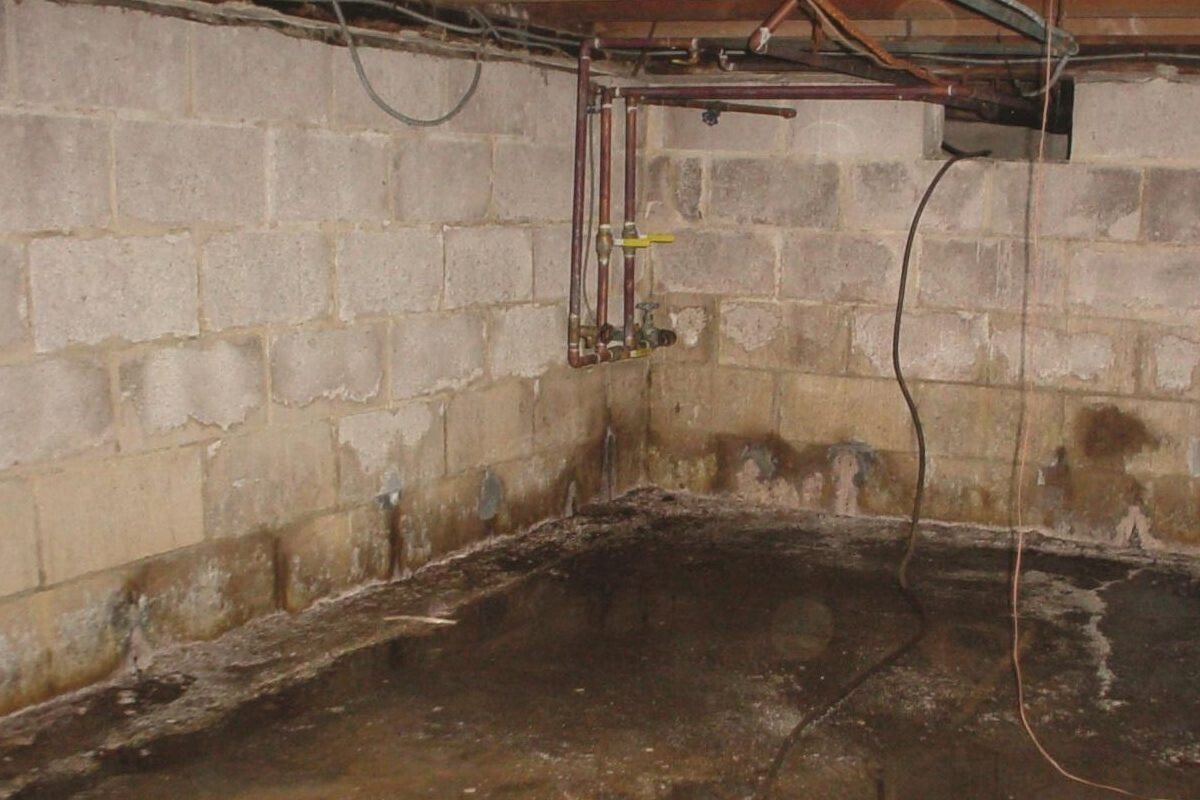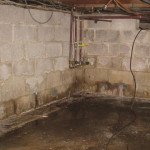You’ve probably wondered, “When is the best time of year to waterproof my basement?” There’s more to take into account than you might think; not only the weather and climate conditions but also contractor availability and cost. The late summer to early fall period often proves ideal, but is it always the case? Let’s explore this topic further and see if we can determine the best time for your specific situation.
Understanding Basement Waterproofing
Often, homeowners overlook the vital task of waterproofing their basements until it’s too late. The discomfort and damage following a basement flood can be significant.
So, it’s essential to understand basement waterproofing to protect your investment.
Basement waterproofing involves techniques and materials used to prevent water from penetrating your basement. It guarantees your home’s longevity and value by avoiding mold, mildew, and structural damage.
It’s not a DIY project; you need professionals due to the complexity of the job.
There are three main types of basement waterproofing: interior, exterior, and drainage.
Interior waterproofing includes sealants and coatings applied to basement walls and floors, preventing moisture from seeping in.
Exterior waterproofing involves excavating around the house to install a waterproof coating or membrane and drainage.
The drainage method guarantees water is directed away from the basement.
Each method has its pros and cons, and the best one for you depends on your home’s specific needs and conditions.
It’s important to consult with a professional waterproofing company to determine the most effective solution.
That’s your first step towards a dry, safe, and comfortable basement.
The Importance of Timing
In the midst of planning for a basement waterproofing project, you may overlook the significance of timing. However, it’s an aspect you can’t afford to ignore. Timing influences the success of your project and can save you both time and money.
You see, weather conditions greatly affect the waterproofing process. During heavy rainfall or snow melt, the water table can rise, increasing the pressure on your basement walls. This makes it harder to effectively waterproof your basement and could lead to more issues down the road if not done correctly.
Moreover, certain waterproofing methods perform better in specific weather conditions. For instance, some sealants adhere better in dry conditions, while others work best in cooler temperatures. Consequently, you’ll want to time your project around these factors to guarantee ideal results.
Additionally, contractors often have a busy season, typically the spring and fall. Scheduling your project during their off-peak season could potentially get you a better deal and faster service.
In short, timing is a vital element in basement waterproofing. You must plan strategically to guarantee the project’s success. Understanding the importance of timing can help you make informed decisions and achieve a dry, safe basement.
Waterproofing in Spring: Pros and Cons
Let’s consider waterproofing your basement in spring, a season with its unique set of conditions.
You’ll appreciate the benefits springtime brings to the waterproofing process, from ideal weather to longer daylight hours.
But it’s also important to be aware of potential drawbacks, like unpredictable rain showers, that could affect the outcome.
Spring Weather Conditions
Despite the allure of warmer temperatures, spring can pose significant challenges for basement waterproofing. The thawing snow and frequent rain showers can result in increased moisture levels, which can seep into your basement, leading to dampness and potential structural damage.
The saturated soil around your home can expand, putting pressure on your basement walls and causing cracks through which water can intrude.
However, spring also brings its advantages. It’s typically easier to spot leaks and damp spots in your basement during this time. The increased humidity and moisture can make these issues more visible, allowing you to pinpoint problem areas.
This is your cue to tackle the waterproofing process head-on, to mitigate any further damage.
The spring season can also mean more flexible scheduling for waterproofing professionals, as it’s not peak season for their services.
Keep in mind though, the ease of spotting leaks doesn’t necessarily mean it’s the best time to waterproof. The ground’s thawing process may not be complete, leading to less effective waterproofing.
Ultimately, understanding these pros and cons can help you make an informed decision about the best time to waterproof your basement.
Waterproofing Process Benefits
Springtime basement waterproofing offers a mixed bag of benefits and drawbacks.
On the upside, you’ll find the process can have significant advantages when timed right. For instance, spring’s moderate temperatures make it an ideal time for waterproofing. Extreme cold or hot conditions can affect the application and curing of waterproofing materials. But in spring, you’re likely to get just-right conditions that allow for a smooth, effective application.
Another pro is that waterproofing in spring allows you to identify and address winter damage before it worsens. The thawing of ground and melting snow can highlight cracks and leaks. Sealing these promptly can prevent further deterioration and expensive repairs down the line.
Moreover, getting your basement waterproofed in spring prepares your house for the rainy season. It increases the resilience of your basement against potential flooding, giving you peace of mind knowing that your home’s foundation is secure.
Lastly, spring waterproofing can enhance your home’s value. It’s a significant upgrade that potential buyers will appreciate, ensuring a higher return on investment.
Potential Springtime Drawbacks
While springtime presents an ideal period for basement waterproofing, it’s not without its potential drawbacks. The warmer weather may seem perfect for getting the job done, but the typically moist and unpredictable climate can pose some challenges.
One of the main cons of waterproofing in the spring is the high likelihood of rain. Wet conditions can hinder the waterproofing process, making it less effective or even causing it to fail completely. The ground may be too saturated to allow for proper sealing, and rain can wash away the waterproofing materials before they’ve had a chance to dry and settle.
Moreover, the fluctuating temperatures can be problematic. The freeze-thaw cycles common in spring can cause the ground to shift, which might lead to cracks in your basement walls. These cracks can undermine the effectiveness of your waterproofing efforts.
Summer Waterproofing: Benefits and Drawbacks
If you’re considering waterproofing your basement, summer can be an ideal time to get it done. The dry, warm weather provides perfect conditions for the foundational work involved. You’ll find that the ground is easier to dig, and the waterproofing materials adhere better and dry faster in the summer heat.
However, summer waterproofing isn’t without its drawbacks. For one, it’s the busiest season for most contractors. High demand might mean longer waiting times, potentially leaving your basement vulnerable to unexpected summer storms.
It’s also important to remember that high temperatures can make the work tougher and more time-consuming, potentially increasing labor costs.
In addition, if you’re DIY-ing, summer’s heat can make the job an exhausting endeavor. Protective gear, necessary for handling waterproofing materials, can be especially uncomfortable in sweltering conditions.
Despite these drawbacks, summer waterproofing has its advantages. It can be a quicker process, thanks to the favorable weather, and you’ll have the peace of mind knowing your basement is ready to face the rest of the year’s weather challenges.
Weigh these benefits against the potential downsides to decide if summer is the right time for you to waterproof your basement.
Fall: Ideal Season for Waterproofing?
Have you ever considered the fall season as the ideal time for waterproofing your basement?
Fall’s weather conditions offer unique advantages for waterproofing, making it a prime time to protect your basement.
Why Choose Fall Season?
Though you mightn’t initially consider it, fall proves to be the ideal season for waterproofing your basement. The reasons for this are manifold, but let’s focus on the practical aspects first.
During fall, you’re likely to have emptied your basement of summer gear, making it less cluttered and easier to work in. Additionally, many waterproofing processes require your basement to be relatively dry. Summer humidity can make this challenging, but in the fall, you’ll find that conditions are often just right.
Moreover, the fall season is typically less busy for contractors, meaning you’ll have an easier time scheduling the work and might even benefit from lower prices. It’s a win-win situation!
Plus, taking care of this task in the fall guarantees that your basement is ready to withstand the often harsh winter weather.
Lastly, fall is an excellent time for an inspection. If there are any leaks or water damage, they’ll likely have become evident during the summer months. Waterproofing in the fall gives you a chance to address these issues before they worsen in winter.
Falls Weather Advantages
One might wonder why fall weather specifically lends itself to basement waterproofing. Well, there are several reasons that make fall the ideal season for this task.
Firstly, fall’s moderate temperatures are perfect for the application of waterproofing materials. These materials often require certain temperatures to apply and cure correctly. They can’t be too hot or too cold. Fall’s steady, moderate weather provides that perfect balance.
Secondly, fall is also the time when the ground is relatively dry. Summer rains are behind you, and the winter snow hasn’t yet arrived. This gives you a better chance to spot leaks and cracks, and properly seal them without any water interference.
Additionally, fall’s cool weather makes it more comfortable for you or the professionals you hire to work in the basement. You won’t be dealing with the intense heat of summer or the freezing temperatures of winter.
Preventing Winter Damage
Given these advantages of fall weather, it’s unquestionably the best time to waterproof your basement.
Why, you ask? Well, consider the damage winter can inflict. Winter’s cold, moisture-laden air can wreak havoc on an unprepared basement.
Water in your basement’s soil freezes, expands, and exerts immense pressure on your basement walls. This pressure, known as hydrostatic pressure, can cause cracks, leaks, and, in severe cases, structural damage.
Water seepage during spring thaws can worsen these problems, leading to a damp, moldy, and unhealthy living space. It’s a common but preventable problem.
Waterproofing your basement in fall is the key to preventing winter damage. It’s the time when soil is still relatively warm and dry, allowing for effective application of waterproofing materials.
Also, fall provides ample time for the waterproofing to cure and form a solid barrier against winter’s onslaught.
Winter Waterproofing: Risks and Rewards
While winter might seem like a less than ideal time for basement waterproofing, there are some distinct advantages to be had. For one, winter often exposes the most vulnerable areas of your basement. You’ll be able to see cracks and leaks more clearly, making it easier to identify problem areas. This gives you the chance to solve these issues before they become major problems.
However, winter waterproofing isn’t without its risks. Cold temperatures can make some waterproofing materials less effective. If you’re considering DIY solutions, you’ll need to verify the products you use are suitable for winter conditions.
Also, remember that working in a cold, damp basement can be uncomfortable, so be prepared and dress appropriately.
Despite the risks, the rewards are evident. By waterproofing your basement in winter, you’re taking proactive steps to safeguard your property against spring’s thaw and heavy rains.
It’s about prevention rather than cure. You’ll be saving time, money, and stress in the long run.
Key Factors Influencing Waterproofing Timing
Deciding when to waterproof your basement isn’t a decision to take lightly, as several factors can influence the best timing.
First, consider your region’s climate and weather patterns. You’ll want to avoid periods of heavy rainfall as this can complicate the waterproofing process and potentially cause further damage.
The condition of your basement is another vital factor. If you’re already dealing with severe leakage or structural issues, you may not have the luxury of waiting for ideal weather conditions. In such cases, immediate waterproofing is necessary to prevent further deterioration.
The type of waterproofing method you’re planning to use also plays a role. Some methods, like interior water drainage, can be done anytime. However, exterior waterproofing often requires dry ground conditions.
Lastly, consider your personal schedule and convenience. Waterproofing can be disruptive, and you’ll need to guarantee you have the time to oversee the process and deal with potential complications.
To sum up, don’t let your basement become a damp squib. Aim for late summer to early fall to waterproof. This timing offers the goldilocks condition – not too hot, not too cold – for the materials to work effectively. Plus, contractors are generally more available then. Remember, beating winter is key to prevent future water damage. So, don’t beat around the bush, get your basement waterproofed in the right season, and keep it dry and damage-free.


